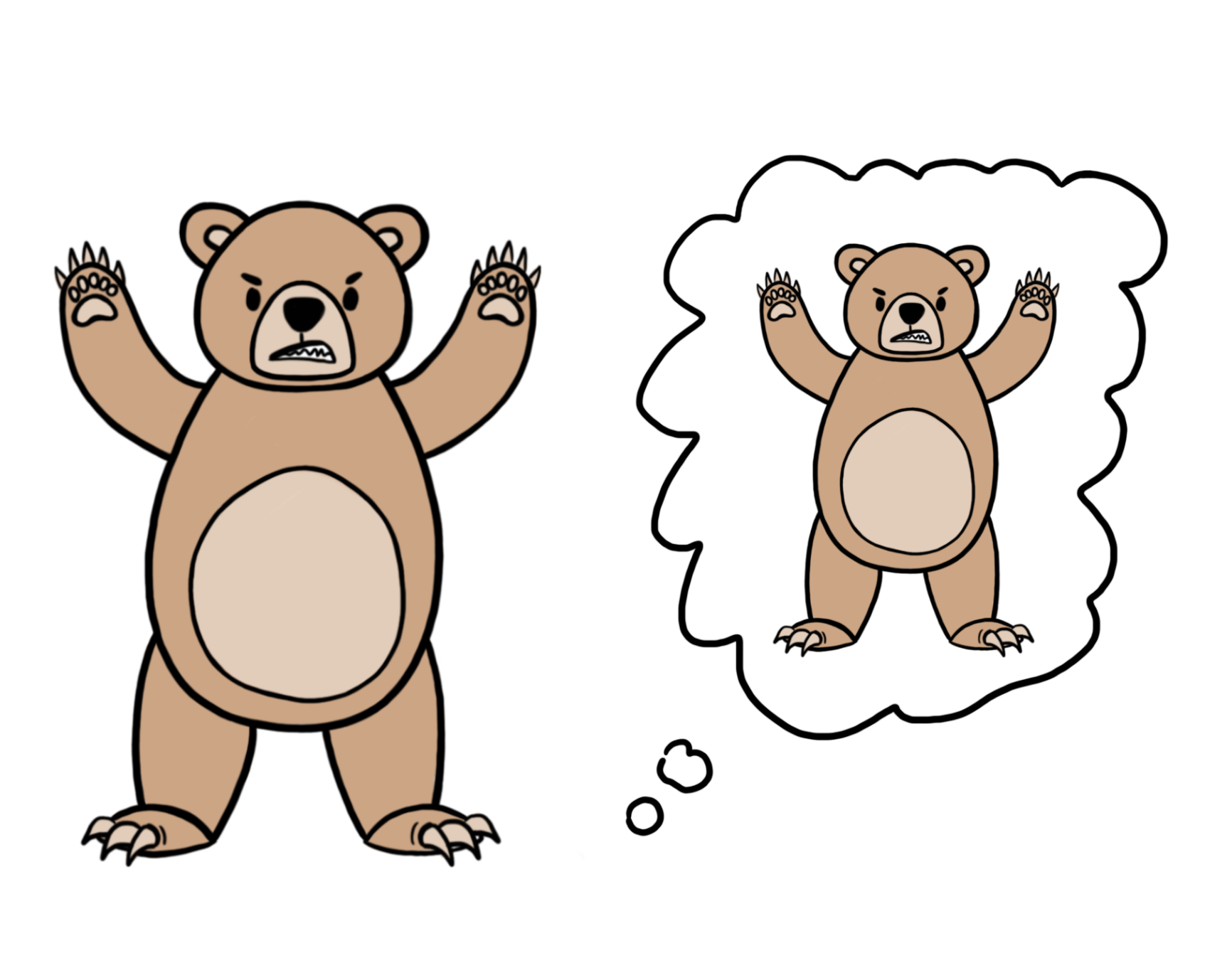
Trauma and Perception
In our last lesson we started to define what stress and trauma is. But there’s actually a caveat to this definition that I felt deserved a whole lesson on its own… and the caveat is that stress and trauma can be caused by either real, or perceived, threats to our wellbeing. This is what makes this such a nuanced and complicated topic. And it’s why some people can experience the same event very differently. There’s a lot to unpack here, so let’s begin.
Understanding our perceptions of danger
So if we go back to the definition from our last lesson on what traumatic stress is, it is a biological response to a threat to our well-being that overwhelms our capacity to cope. And this stress response can happen whether the threat is real or perceived. What this means is that our nervous system will go down the ladder into a danger response based on its own unconscious perceptions of danger.

If we go back to our very first lesson on polyvagal theory, we remember that our autonomic nervous system is continually scanning our environments for cues of safety and danger. And this doesn’t happen with our thinking brains — our nervous system does this automatically below our conscious awareness with our ‘survival’ brain. To add another fancy word in the mix, this process is called neuroception. But for now, I mostly want to focus on the idea of why our survival brains might automatically perceive something as unsafe, and why this can be so different for everyone.
Why our perceptions are so different: an example
To do this, I want to throw an example out there.
If you were driving home, and someone ran a red light that caused you to get into a minor car accident, while there is a real threat to your well-being in this event, your unconscious perceptions can significantly change the degree of stress or trauma that you experience both during and afterwards.
If you were a professional race car driver in your late 30’s and this minor car accident occurred, there’s a good chance you wouldn’t feel too much stress considering the years of experience you have as a driver. You most likely would feel some stress, but it would be tolerable, and you would have the resources to take action and cope with the situation. And because of that, once the event had passed, you’d most likely be able to shake the situation off, return back to the green zone, and go on with your day.

On the other hand, if you’re a young person who just got your licence, has limited driving experience and no knowledge of how to handle something like this, there’s a higher chance your nervous system could go into a danger response and perceive the event as extremely stressful.

If you’ve had a negative experience with car accidents in the past where you or a loved one was seriously hurt, this might also make this minor accident seem a lot more major to your nervous system. You might panic, freeze, or go into shock, and be too overwhelmed to take action or process the experience.
If you have negative beliefs about yourself — such as “I’m incompetent” or “I’ll be judged” or “I’ll get in trouble” — you might feel fear, shame or guilt for getting into a car accident in the first place, which can increase the level of overwhelm you’re feeling in the body and make coping even harder.
If you’re dealing with this overwhelming situation all on your own and you don’t have a safe person that you can seek support from, this again can make coping harder. Without the resources to cope with the situation in the moment, it might take you longer to return back to the green zone, and you might find yourself still in the danger response for a while even after the event has passed and the threat is no longer there.
Factors that affect our perception
So if we reflect on this example, what are the elements here that can make our brains perceive something as traumatic?
- Our age and level of brain development
- Our available resources
- Our beliefs and the stories we tell about ourselves
- Our capacity to manage strong emotions
- Our social support and whether we can reach out for help, or are alone
- Our ability or inability to take action or escape from a situation
- Our previous experiences
- Our genetics
These factors can all affect how our brain will unconsciously evaluate a situation as either safe or dangerous. And our brains make these assessments based on not only what it can see in the current environment around us, but also from what has been stored away in our subconscious memories.
This is what makes this such a complex topic, because there are so many factors that come into play for any one person. What I want to emphasise in this lesson is that it is our neuroception — our automatic, unconscious perceptions of safety or danger — that causes a traumatic stress response in our bodies and minds. And our neuroception is influenced by all of these other factors that I just mentioned. Trauma falls on a continuum, and our thinking brains can’t just rationally judge something as worthy of being considered traumatic or not, both for yourself or another person, because it is so subjective. I hope in learning this you can give yourself a little bit of kindness.
Lesson Review
This lesson explained how our perceptions can affect our responses to stress and trauma. In our next couple of lessons we’re going to dive into the types of trauma we can experience and deepen our understanding of all this even further, so that we can start to learn how to heal.

